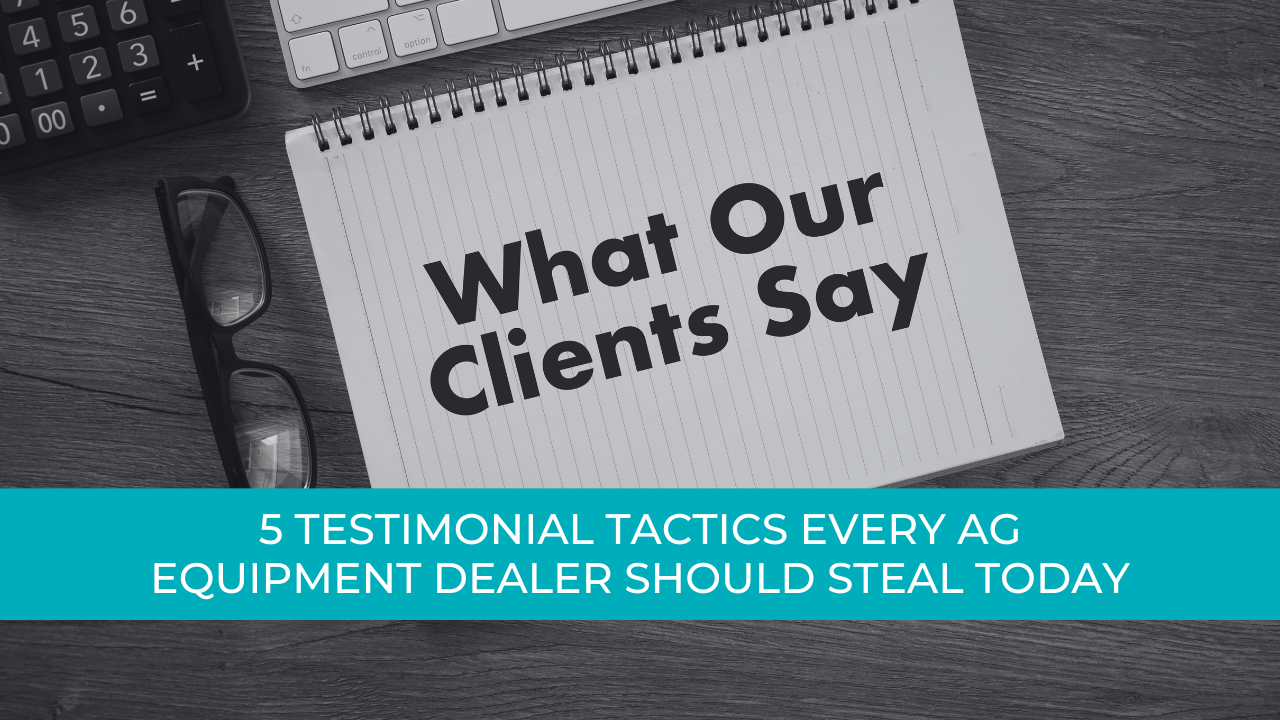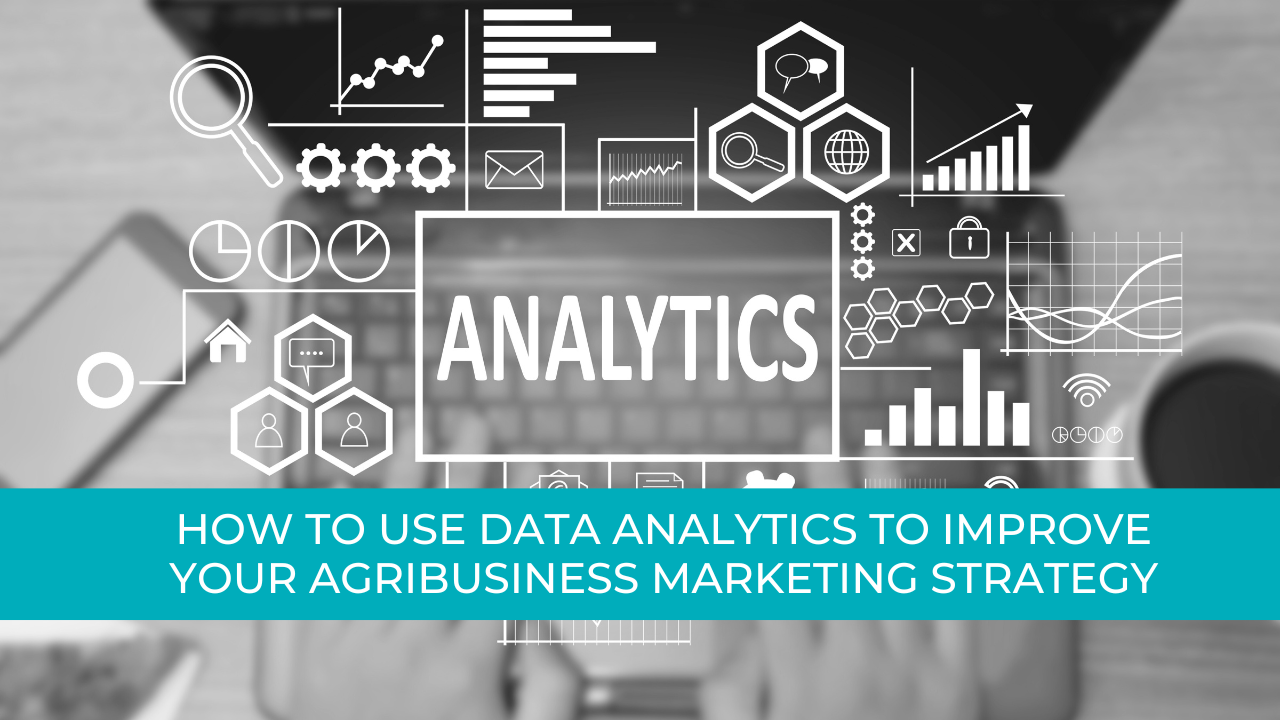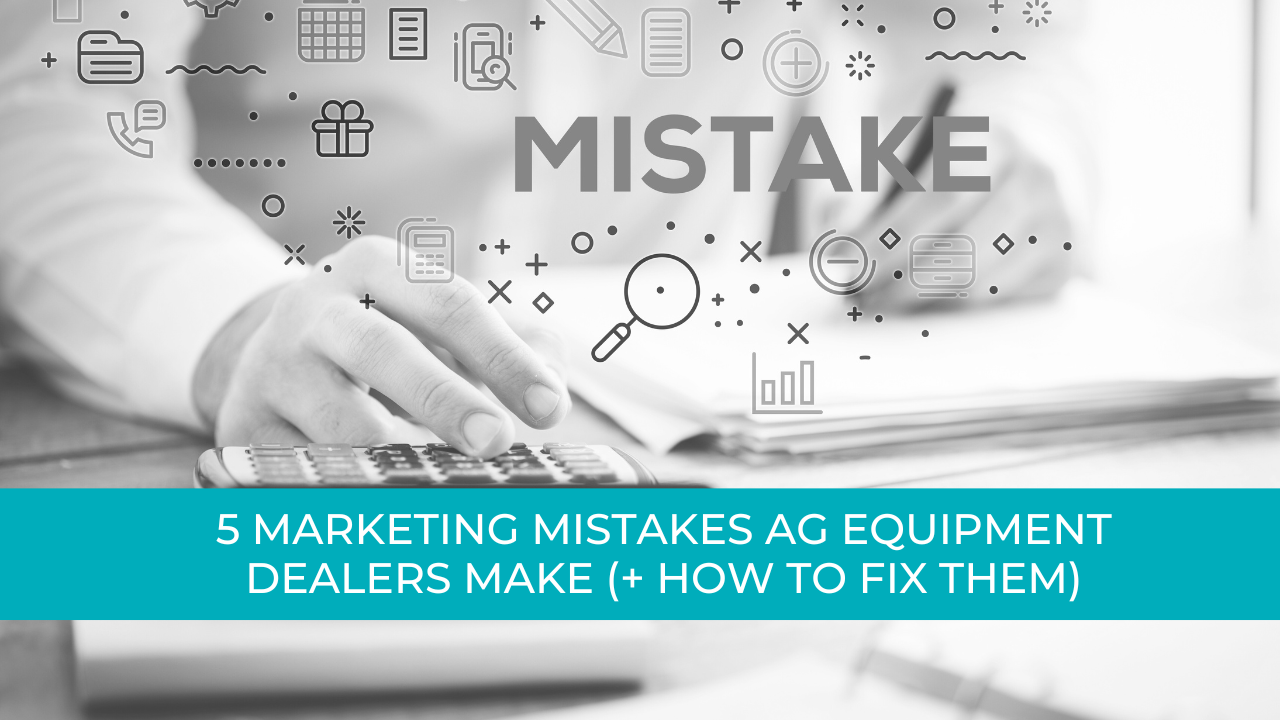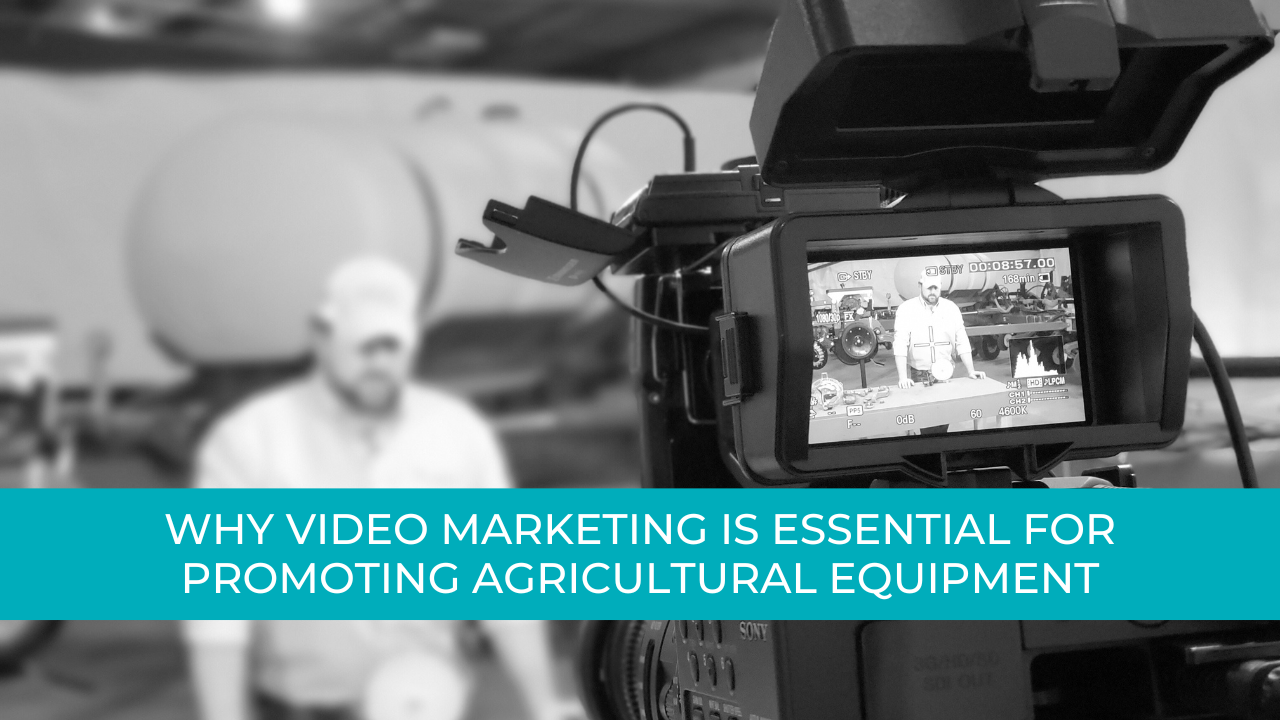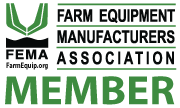Agtivation Blog
What's New In The Digital Ag World
Unlocking Value: Smart Pricing for Farm Equipment
In today's competitive agricultural landscape, understanding smart pricing for farm equipment
isn't just beneficial; it's essential. You need to evaluate your offerings based on factors like
condition, market trends, and seasonal demand. Implementing tiered pricing can enhance
customer perception and drive sales. Yet, how do you guarantee that your pricing strategy
aligns with your customers' needs and expectations? Let's explore the intricacies of effective
pricing strategies that can reveal true value for your business.

Key Takeaways
● Implement tiered pricing to encourage customers to choose higher-value farm
equipment options that meet their needs.
● Conduct regular market research to understand demand and identify competitive pricing
opportunities for farm equipment.
● Maintain and document equipment condition to enhance perceived value and justify
competitive pricing to potential buyers.
● Utilize pricing psychology to frame equipment as valuable solutions, emphasizing long-
term savings and productivity benefits.
● Foster customer trust through pricing transparency, ensuring clear communication about
costs and any changes.
Understanding the Importance of Pricing in Agriculture
Pricing in agriculture is more than just numbers; it's a strategic tool that can greatly impact your
business's success. Effective pricing strategies directly influence customer psychology, shaping
how buyers perceive your products. By understanding the value of what you offer, you can set
prices that not only cover costs but also enhance perceived value. For instance, utilizing tiered
pricing can encourage customers to choose higher-priced options, believing they receive more
quality or service. You'll want to analyze market trends, competitor pricing, and customer
feedback to refine your approach continually. By aligning your pricing strategy with customer
expectations, you can drive sales, foster loyalty, and ultimately boost your bottom line, all while
ensuring your agricultural business thrives in a competitive market.
Factors to Consider When Pricing Farm Equipment
When setting prices for farm equipment, you should consider several important factors that can
influence both your sales and customer satisfaction. First, equipment depreciation plays a
significant role; understanding how much value your equipment loses over time helps you set
realistic prices. Next, think about pricing psychology—customers often perceive a fair price
based on their expectations and the competition. It's essential to research market trends and
competitor pricing to find a sweet spot that reflects value. Additionally, consider your target
audience's financial capacity and willingness to pay. Balancing these factors will not only
enhance your pricing strategy but also improve customer trust and loyalty, ultimately boosting
sales and satisfaction in your agricultural business.
Evaluating the Condition of Your Equipment
Understanding the condition of your farm equipment is essential to making informed pricing
decisions. Regular equipment maintenance not only extends the lifespan of your machinery but
also enhances its resale value. Start by evaluating each piece of equipment—look for signs of
wear and tear, check fluid levels, and guarantee all components work as intended. Keeping
thorough maintenance records can help you demonstrate the equipment's reliability to potential
buyers. When you know your equipment's true condition, you can set a competitive price that
reflects its value. Remember, well-maintained equipment often fetches higher offers, making it
vital to invest time in evaluations and repairs before selling. This proactive approach can greatly
impact your bottom line.
Researching Market Trends and Competitors
To set smart prices for your farm equipment, you need to understand market demand and keep
an eye on what your competitors are charging. Analyzing their pricing strategies can reveal
gaps in the market that you can exploit. By identifying your unique value proposition, you can
position your equipment effectively and attract more buyers.
Understanding Market Demand
If you want your agricultural business to thrive, keeping a close eye on market demand is
essential. Understanding market fluctuations helps you anticipate changes that could affect your
pricing strategy. By analyzing trends, you can align your offerings with what customers expect
and need. Pay attention to customer perceptions; they often drive demand more than actual
product features. Engage with your audience through surveys or feedback to gauge their
preferences. This insight allows you to adjust your inventory and pricing effectively. Remember,
a well-informed pricing strategy not only attracts customers but also enhances your business's
reputation in the market. Stay proactive and adapt to shifts in demand for sustained success.
Analyzing Competitor Pricing
How can you effectively set your prices without knowing what your competitors are charging?
Conducting a thorough competitor analysis is essential for developing smart pricing strategies.
Start by researching local and online competitors to understand their pricing structures. Are they
undercutting prices, or do they offer premium products? This insight helps you position your
farm equipment competitively while ensuring profitability. Look for patterns in pricing and
promotional tactics, as these can reveal market trends. Don't forget to analyze customer
feedback on competitors' products—this can guide your pricing decisions. By understanding the
competitive landscape, you can set prices that attract customers while reflecting the value of
your offerings, ultimately enhancing your business's bottom line.
Identifying Value Proposition
Understanding your value proposition is essential for standing out in the competitive farm
equipment market. To identify this, you need to research market trends and analyze your
competitors. Start by evaluating customer expectations—what do they value most in farm
equipment? Is it durability, efficiency, or technology? By understanding value perception, you
can tailor your offerings to meet these needs. Survey potential customers or check online
reviews to gather insights that highlight what sets your products apart. This information will help
you craft a compelling narrative around your equipment, ensuring it resonates with your target
audience. Ultimately, a clear value proposition not only enhances your pricing strategy but also
strengthens customer loyalty and drives sales.
The Role of Seasonal Demand in Pricing
As the seasons change, so do the demands for various farm equipment, which can significantly
influence your pricing strategy. Seasonal fluctuations are essential to evaluate; for instance,
demand for planting equipment peaks in spring, while harvest equipment gains traction in fall.
By analyzing these patterns, you can adjust your pricing strategies accordingly. Raising prices
during high-demand periods can maximize profits, while offering discounts in off-peak times can
attract buyers. Additionally, understanding local agricultural cycles enables you to tailor your
offerings, ensuring you're meeting customer needs. By staying attuned to these seasonal
trends, you can position your equipment competitively, enhancing both sales and customer
satisfaction throughout the year.
Offering Value-Added Services With Equipment Sales
While selling farm equipment is essential, adding value-added services can truly set your
business apart. By incorporating service bundling, you not only enhance customer satisfaction
but also boost your bottom line. Consider these value-added benefits:
1. Maintenance Packages: Offering routine check-ups guarantees equipment longevity
and builds trust.
2. Training Sessions: Educating customers on proper equipment use improves safety and
efficiency.
3. Financing Options: Flexible payment plans can attract more buyers, making high-cost
equipment more accessible.
These strategies create a thorough experience, encouraging repeat business and referrals. By
focusing on value-added services, you position your company as a go-to resource in the
agricultural community, ultimately driving growth and loyalty.
Strategies for Transparent Pricing
When setting prices for farm equipment, it's essential to establish clear pricing guidelines that
customers can easily understand. By conducting a competitive market analysis, you can
guarantee your pricing remains attractive while reflecting the value you provide. Adopting a
value-based pricing approach not only builds trust but also strengthens customer loyalty,
making your offerings more appealing in a crowded market.
Clear Pricing Guidelines
Transparent pricing can be a game-changer for your agricultural business. By embracing clear
pricing guidelines, you meet customer expectations and enhance trust. Effective pricing
strategies should focus on clarity, ensuring your clients understand what they're paying for.
Here are three essential elements to evaluate:
1. Itemized Pricing: Break down costs to show details, from equipment to services.
2. Consistency: Apply uniform pricing across platforms to avoid confusion.
3. Regular Updates: Keep prices current and communicate changes promptly to maintain
transparency.
These practices not only help you stand out in a competitive market but also build lasting
relationships with your customers, ensuring they feel valued and informed about their
investments.
Competitive Market Analysis
Understanding your competition is essential for setting transparent pricing in your agricultural
business. To effectively establish your market positioning, analyze your competitors' pricing
strategies. Look at what similar equipment costs and how those prices reflect their features and
benefits. This insight helps you identify where you can differentiate yourself, whether through
superior quality, better customer service, or unique offerings. Consider conducting surveys or
gathering feedback from customers to understand how they perceive value. By aligning your
prices with market expectations while showcasing your unique advantages, you can foster trust
and transparency. This approach not only enhances your credibility but also positions your
brand competitively in the marketplace, making it easier for customers to choose you over
others.
Value-Based Pricing Approach
Setting the right price for your farm equipment goes beyond just matching your competitors; it's
about understanding the true value you offer to your customers. Implementing a value-based
pricing approach can enhance your value perception and foster trust. Here are three effective
pricing strategies:
1. Customer Feedback: Regularly gather insights on how your equipment meets their
needs. Adjust prices based on perceived value.
2. Cost-Benefit Analysis: Clearly demonstrate how your equipment's features save time
and money, creating a compelling reason for your pricing.
3. Transparent Communication: Openly share your pricing rationale, helping customers
see the value behind the costs.
Communicating Value to Customers
When you clearly communicate the value of your products or services, customers are more
likely to trust your brand and make a purchase. Understanding customer perceptions is key to
effective communication. Highlighting features that directly address your customers' needs can
shift their mindset, reinforcing the value of your offerings. Use pricing psychology to frame your
products as solutions rather than just costs. For example, emphasize long-term savings or
increased productivity, showing customers how your equipment pays for itself over time.
Engaging visuals and compelling stories can further enhance your message, making the value
tangible. In this way, you create a connection that not only justifies the price but also fosters
loyalty and repeat business.
Adjusting Prices Based on Customer Feedback
Listening to your buyers is essential for keeping your pricing competitive and relevant. By
actively seeking and analyzing customer feedback, you can quickly adapt your prices to meet
market needs and enhance satisfaction. This responsiveness not only shows that you value
their opinions but also strengthens your brand's position in the marketplace.
Listening to Buyers
How can understanding your customers help you set the right price for your farm equipment?
Listening to buyers offers invaluable market insights that can shape your pricing strategy. By
tapping into buyer preferences, you can adjust your prices to better align with what customers
are willing to pay. Here are three ways to leverage customer feedback:
1. Surveys and Interviews: Engage directly with buyers to gauge their perceptions and
expectations.
2. Sales Data Analysis: Review historical sales trends to identify price points that resonate
with your audience.
3. Competitor Comparisons: Analyze competitor pricing to guarantee your offerings
remain competitive without sacrificing value.
Adapting to Market Needs
Understanding your market's needs is vital if you want to price your farm equipment effectively.
By actively seeking customer feedback, you can identify trends and preferences that inform your
pricing strategy. This market adaptability guarantees you stay relevant and competitive. When
customers express concerns about pricing, it's important to respond with pricing
flexibility—consider offering tiered options or seasonal discounts. Analyzing sales data
alongside customer insights allows you to adjust your prices dynamically, making sure they
reflect actual demand. Ultimately, this proactive approach not only enhances customer
satisfaction but also boosts your bottom line. By aligning your pricing with market needs, you
foster loyalty and encourage repeat business, solidifying your position in the agricultural
industry.
Building Long-Term Relationships Through Fair Pricing
When you set fair pricing for your farm equipment, you not only attract customers but also lay
the groundwork for lasting relationships. Fair pricing fosters trust, which is essential for building
customer loyalty. When customers feel they're getting value, they're more likely to return.
Consider these key elements:
1. Transparency: Clearly communicate your pricing structure to avoid confusion.
2. Consistency: Maintain stable prices that reflect market conditions and your equipment's
value.
3. Feedback: Actively seek customer input to understand their perception of value.
Frequently Asked Questions
How Can I Determine My Farm Equipment's Best Selling Price?
To determine your farm equipment's best selling price, conduct market research and competitor
analysis. Look for similar items, their pricing strategies, and customer demand to set a
competitive yet profitable price that attracts buyers.
What Are Common Pricing Mistakes to Avoid in Agriculture?
Avoiding common pricing mistakes means ensuring pricing transparency and conducting a
competitive analysis. Don't underprice or overprice your products; instead, adjust based on
market demand and competitor strategies to optimize your sales potential.
How Do I Handle Price Negotiations With Customers?
When handling price negotiations, understand customer psychology. Use negotiation tactics like
active listening and empathy. This builds trust, helps uncover their needs, and can lead to
mutually beneficial agreements that satisfy both you and your customer.
Should I Offer Discounts for Bulk Purchases?
Offering bulk pricing can boost customer loyalty and encourage repeat business. It shows you
value their commitment while enhancing your sales volume. Just guarantee the discounts align
with your profit goals to maintain sustainability.
How Often Should I Review My Pricing Strategy?
"Good things come to those who wait." You should review your pricing strategy
regularly—ideally quarterly. This pricing frequency allows for timely strategy evaluation,
ensuring you adapt to market changes and customer needs effectively.
Final Thoughts
In the dynamic world of farm equipment, pricing precision is paramount. By prioritizing practical
pricing strategies and persistent market research, you can cultivate customer confidence and
satisfaction. Transparent techniques not only enhance your reputation but also build lasting
loyalty. Remember, a well-crafted price communicates value while reflecting your equipment's
condition and market demand. Ultimately, smart pricing isn't just about numbers; it's about
nurturing relationships that reap rewards for you and your customers alike.





